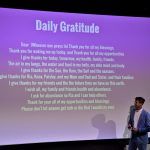
Surgery can accomplish amazing things, but without the correct post-surgical treatment and therapy the benefit can be reduced, or in some cases lost due to a recurrence of the original problem. This is especially true with contracture releases, one of the more common operations required for the patients here in Bahir Dar.  You will see in many of the photos throughout this blog photos of a hand that is contracted into a fist, or in the most extreme cases folded back completely. Or perhaps a face pulled down on one side due skin contraction following a burn. After the surgeons release the contracted area, generally requiring a skin graft and possibly tendon extension, then the affected area can straighten again.
You will see in many of the photos throughout this blog photos of a hand that is contracted into a fist, or in the most extreme cases folded back completely. Or perhaps a face pulled down on one side due skin contraction following a burn. After the surgeons release the contracted area, generally requiring a skin graft and possibly tendon extension, then the affected area can straighten again.
This is the point at which the ideal treatment requires an Occupational Therapist (O.T.). David Nelson, from Kelowna has joined this team for exactly that reason. His first mission, David has worked in the past with colleagues from Rotary who alerted him to the fact that Restor-Rotary were looking for exactly this skill set for Ethiopia-2016. In fact, many of the patients we have treated this time are back from earlier treatments during the 2014 mission where contractures were released, but either pain or infection (or both) caused the area to re-scar and contract again.
David creates splints and/or braces to help mitigate this problem. With the right splint, and if a patient follows David’s instructions, it is possible to heal with the correct shape and mobility once again. As David says, “Straightening the finger is the job of the surgeon and the splint. Making a fist is the job of the patient!” The addition of this step, with proper splint forming and the professional instruction to go with it clearly makes a huge difference to the treatment!
O.T. is, like everything else here in Africa, something of a challenge! Equipment and resources are limited, and even though the team brought a good supply of plastic, Velcro strapping, tensor bandages, and other supplies, there are needs that require creative solutions. But it is impossible to allow for every contingency. David notes that at home, we have it all. Sanitation, towels, lights, plastics, heating devices, whatever is needed! Here it is a different culture. For example, we would have a separate water vessel for every purpose. In Africa, there would be just one.
The compensation for the challenge is the team. As many have commented, the entire group works together in a collaborative and cohesive manor that makes the work both satisfying and productive. In spite of the challenges, amazing results are achieved! As with the case of anesthesiology discussed in an earlier blog, there is a lot of room for more Occupational Therapy in Africa!
-Peter Schultz








